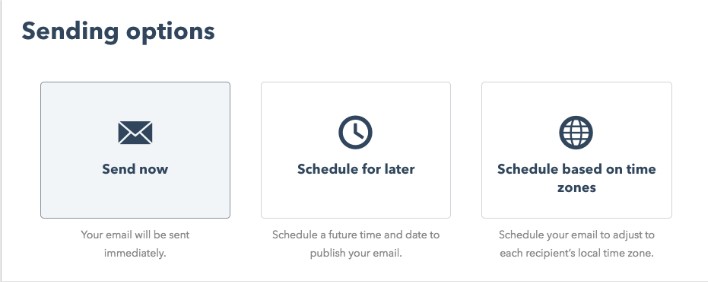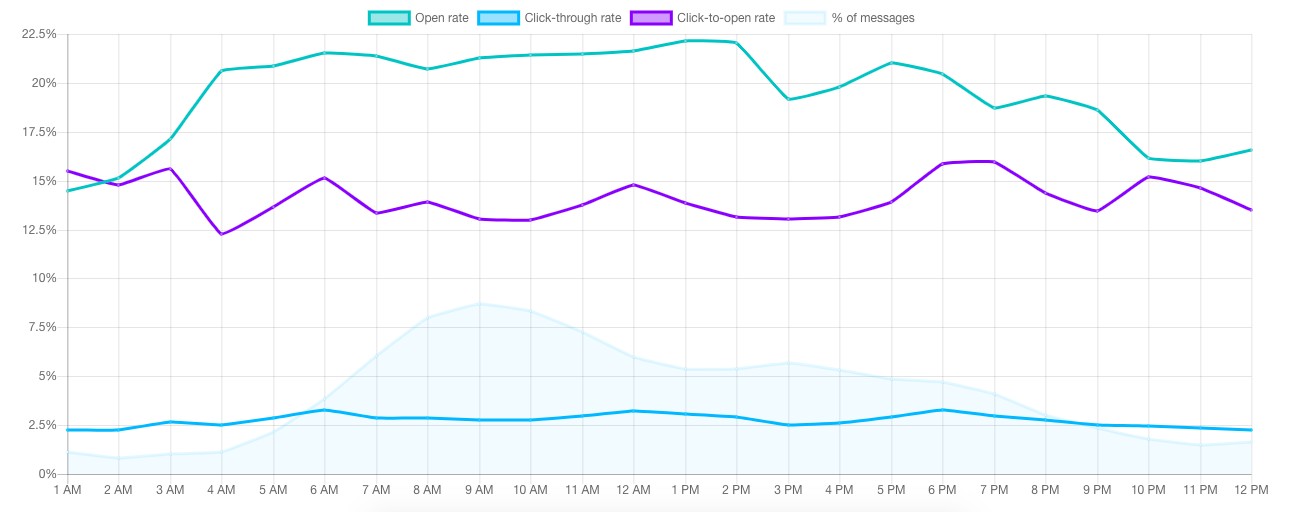Here's a little exercise for you: Check the timestamps on the emails you've gotten in the past day. What have you found? For me, I noticed that most of my emails, especially my subscription emails, were sent between 9-10 AM, or 5-6 PM.
This isn't a coincidence, either.
While the answer to “What’s the perfect time to send an email to my customers?” isn't an exact science, there are some key findings we've discovered through heavy research, and those times listed above are right in line with what we found. Keep reading to find out the best time to send an email, according to our findings.
Why Email Matters For Your Business
Automated email marketing provides a chance for you to improve sales conversions — maybe even by 14%. It’s a way to send customers unique offers — such as product sales or newsletters updates — with information your reader can’t get anywhere else.
Emails should be personalized with what your customers want to see, allowing you an instant way to communicate with them. Your emails should contain information your customers are interested in learning more about, such as discount offers, business updates, or product/service launches.
HubSpot's marketing email tool allows users to create and send automated emails for free. It also gives you the option to schedule your emails according to the preferences you’ve set. Then, your emails will then be sent to the list(s) of contacts you select.

When you reach this option in your automated email tool, you probably spend some time wondering when exactly your audience would like to receive your email, especially if it includes a limited-time offer. You want to make sure the highest number of customers possible are reading your emails.
How to Measure the Performance of Your Email Sends
If you're wondering about the best time to send a marketing email, there's something you should know first. There's a lot of data out there on the subject that provide differing answers, and one reason is because it depends on your audience and, more importantly, how you're measuring success.
For example, the best time for people opening your emails could differ from the best time for people to take action. Here is a breakdown of the most important email metrics:
Click-through rate
Click-through rate refers to the number of people who open a link or image in an email. This number will always be smaller than the total number of emails opened, since some people will open your email but then abandon it without engaging with it any further.
Click-to-open rate
When comparing the number of people that opened your email and the number that clicked on any links, that data is called click-to-open rate. This metric helps you identify which information in your emails is relevant to consumers. Finding CTOR is done by diving CTR by the open rate and multiplying it by 100%. For example, if your email receives 200 clicks and 120 opens, your click-to-open-rate is 60%.
Open rate
The open rate, then, is the percentage found from the number of subscribers who opened your email campaign. Emails that have great open rates have short, effective subject lines. Plus, they're optimized for previews and preheader text.
Best Time to Send Emails
If you're sending emails that include a sale or promotion, try sending them during the times your audience tends to take their lunch breaks simply because they may be more likely to check their emails at this time.
If you want something more specific when it comes to what time and day you should send an email, we found some researched-backed best practices.
The following numbers are from GetResponse, an email marketing software that combed its data to compile a report of email marketing benchmarks. They analyzed 4 billion emails from 1,000 active senders.

The highest line of the graph represents the open rate. The purple line (i.e., the one below it) represents the click-to-open rate. Below that, the dark blue line, represents the click-through rate. The almost transparent data counts the number of messages sent in percent value.
This gets into the best day to send through an email. CampaignMonitor collected data from millions of emails used on their service. They put together the best day as it pertains to data collection.

From this data, it looks like the best days for seeing a good blanket of success fall during the workweek. People are mostly opening and reading through emails in the middle of the week. It's also good to keep in mind the lowest unsubscribe rate: during the beginning of the week.
Keeping your audience in mind is a good tip for figuring out the time to send your emails. If your buyer persona is a professional with a nine-to-five job, sending emails during their ideal downtimes are the best. For instance, HubSpot sends emails between 8-9:30 AM ET to match our audience's daily routines.
Entrepreneur concurs with the above broad strokes recommendations but breaks it down further based on audience type:
The big take-away here is that you'll want to segment your B2B audience down even further, perhaps by job function or seniority, to accommodate different behaviors and modes of working with your email sends. You may even find that other times work better for your list.
B2B is great and all, but does the time you send an email matter when marketing consumer and personal goods?
Again, keep in mind that studies differ, consumer behavior is always changing, and performance varies based on which metric you're using as your ultimate goal. Continue experimenting and seeing what works best with your audience. One way to do this is by using an automation tool like Seventh Sense which will fine-tune your email sends using artificial intelligence.
Email marketing can be a tricky subject. There are so many industries taking advantage of it in their own way and making an impact. How do you measure up?
Your subscribers are already interested in your content. They appreciate what you are offering as a company, and as long as you're sending them emails that relate to that, you have a good chance of obtaining great metrics.
Editor's note: This post was originally published in November 2019 and has been updated for comprehensiveness.
